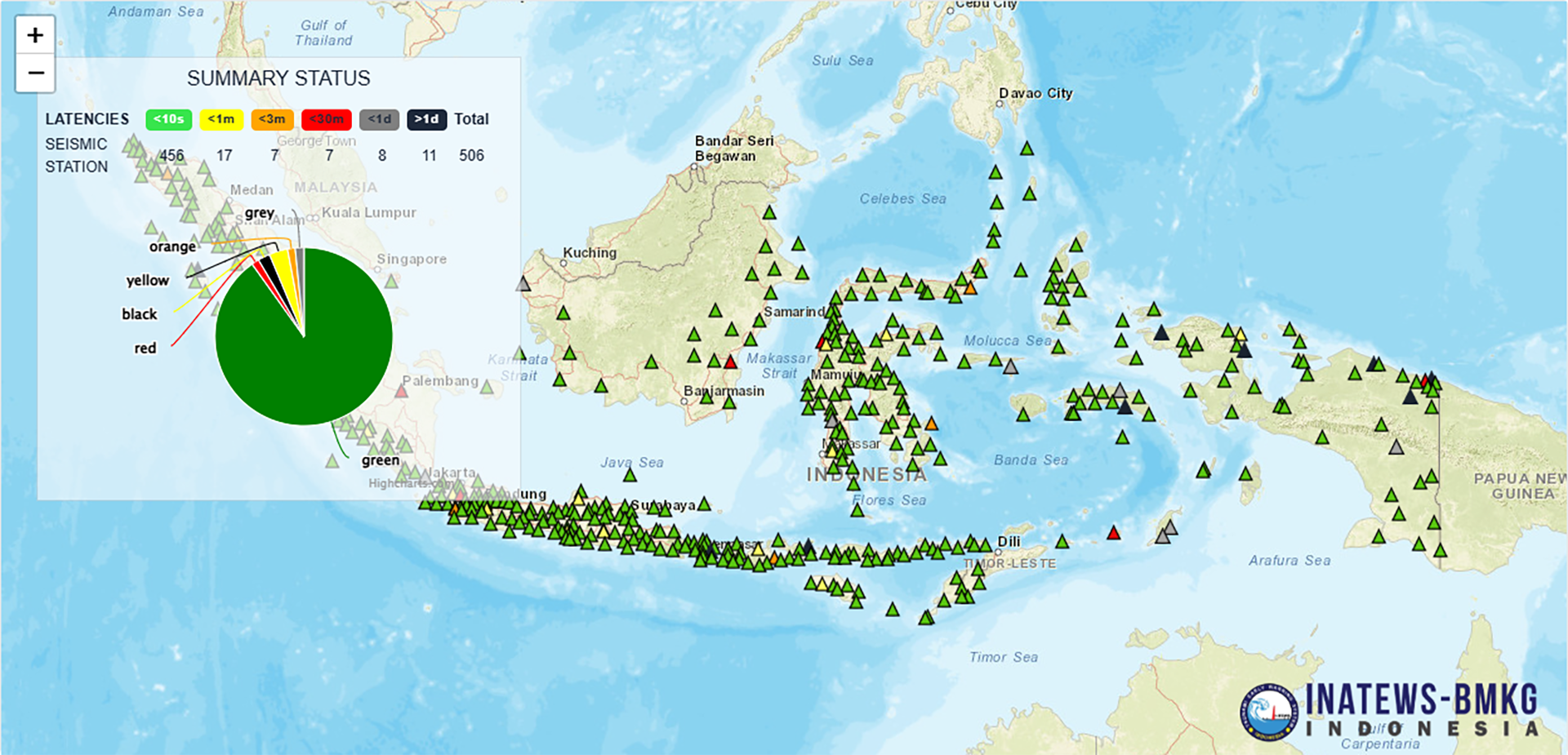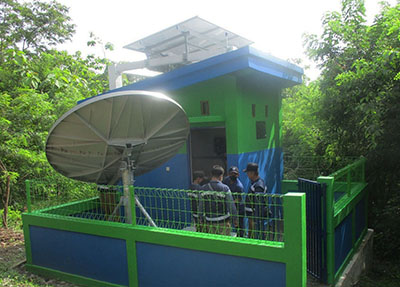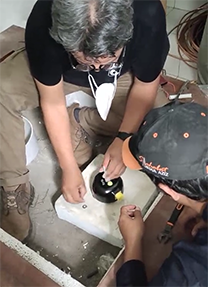BACKGROUND
With the history of volcanic eruptions from Krakatau followed by devastating tsunamis, the Indonesian government has developed a permanent network of seismic monitoring equipment to improve preparedness for these disasters.
Specifically, after the Anak Krakatau volcanic eruption and subsequent tsunami on 22 December 2018, Indonesia has increased the number of seismic stations to over 400 seismic sensors currently spread throughout the country.
This significant development of the network aims to improve the data quality, speed of earthquake data processing, and information dissemination to the public. The data will provide better hypocentre as well as magnitude accuracy.
Indonesian seismic network data is available in an open and easy-to-use format, with the aim of increasing government transparency and accountability, as well as increasing public participation in overseeing government performance.
The seismic waveform data is also available and accessible to academics around the world, encouraging research and development in Indonesia.
Project Requirements
Digitiser latency is very important due to the early warning nature of the network. Güralp’s Minimus digitisers utilise GDI protocol which allows transmission down to 40ms latency. For complete seismic detection, a wide range of instruments has been installed from broadband sensors to strong motion accelerometers.
Seismometer data from the seismic station network mainly supports the Indonesia Tsunami Early Warning System (InaTEWS) operations by generating earthquake parameters, while accelerometer data from all the networks provides additional support information, such as source mechanisms and shake maps.
The Güralp solution
Since 2021, Güralp have supplied over 139 stations to the national monitoring network including 3T-120, 3ESPC and Fortis sensors, and Minimus+ digitisers.
The 3T-120
With its lightweight and portable design the weak-motion 3T-120 velocity sensor is suitable for temporary and permanent deployment in vaults or postholes. For this project the 3Ts were supplied as posthole instruments with 100 bar / 10 MPa waterproof connectors. For its’ size the 3T-120 has great sensitivity with 1500 V/msˉ¹ (2 x 750 V/msˉ¹) differential standard output and also has a low self-noise level of 166 s (0.006 Hz) to 10 Hz.
The 3T-120 can be partnered with the Affinity or Minimus digitisers. Each offers a flexible array of features and functionality that you can tailor according to the needs of the project and both utilize precision time protocol for absolute timing accuracy.

Figure 3. The 3T-120
The 3ESPC Seismometer
The Güralp 3ESPC is a proven short-period triaxial force balance velocity sensor.
Ideally suited for long-term temporary and permanent installations in areas with low to moderate noise levels. The instruments’ response and low self-noise level make it suitable for seismic monitoring at local and regional scales.

Figure 3: The 3ESPC
The Fortis Accelerometer
The Güralp Fortis is a very low-noise, force-balance accelerometer with a flat response to ground acceleration from DC to 100 Hz and a stable phase response within the passband. The Fortis’ output can be set, remotely, at a wide range of gain options, providing flexibility for all strong motion monitoring applications.
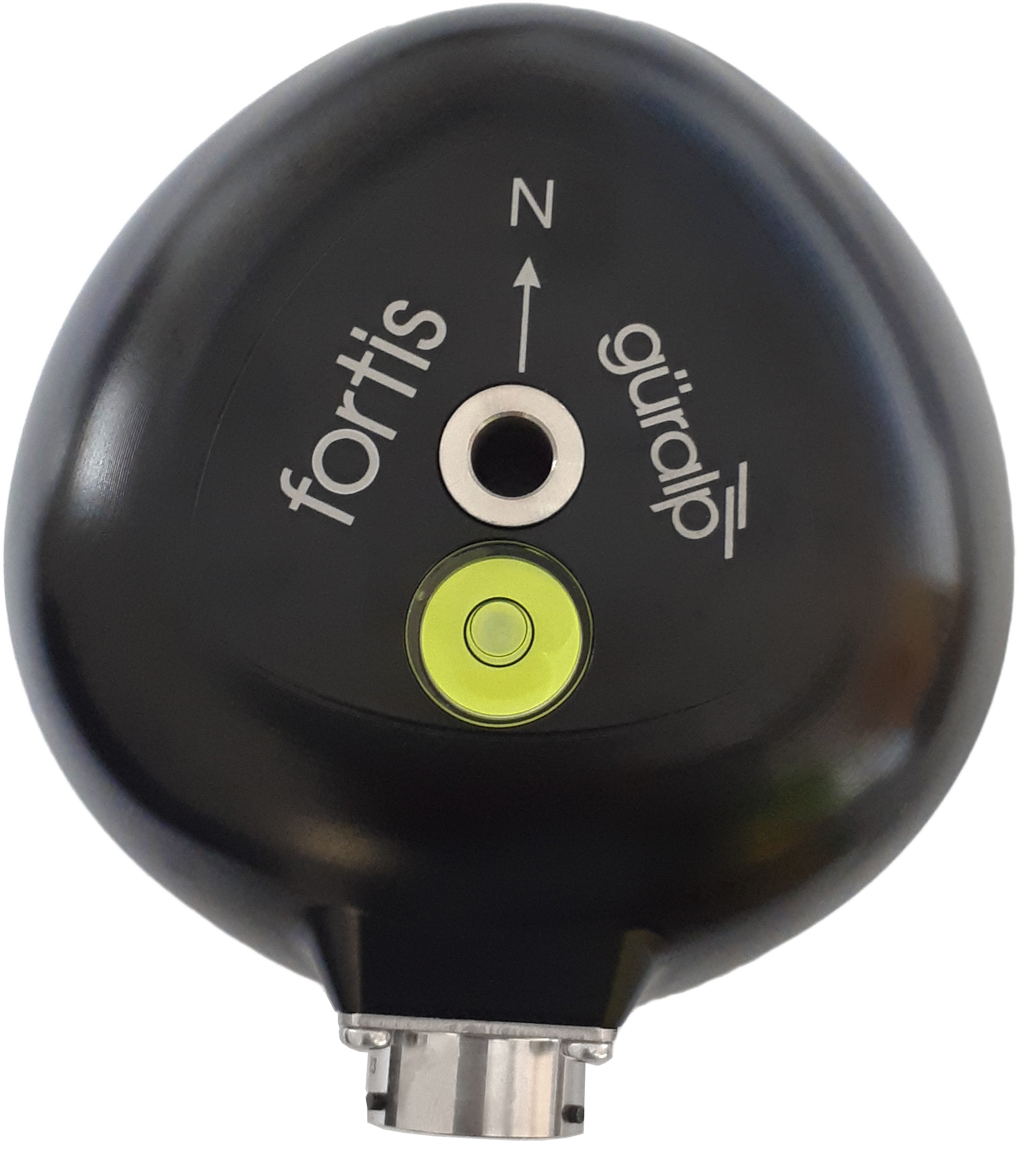
Figure 4: The Fortis Accelerometer
The Minimus+
Minimus digitisers offer advanced ‘smart’ 24-bit seismic ADC conversion and are packed with a host of features that make them the ideal ‘plug-and-play’ solution for rapid deployments and multi-scale networked arrays.
For Earthquake Early Warning applications, features include industry standard triggering algorithms (STA/LTA and Threshold); multi-instrument voting to mitigate false positive alerts; Common Alert Protocol (CAP) for automated emergency warning; plus an ultra-low-latency mode which when used with our GDI protocol means network transmission can be achieved in 40 milli-seconds (network dependent).
The Minimus+ is an 8-channel version of the Minimus.
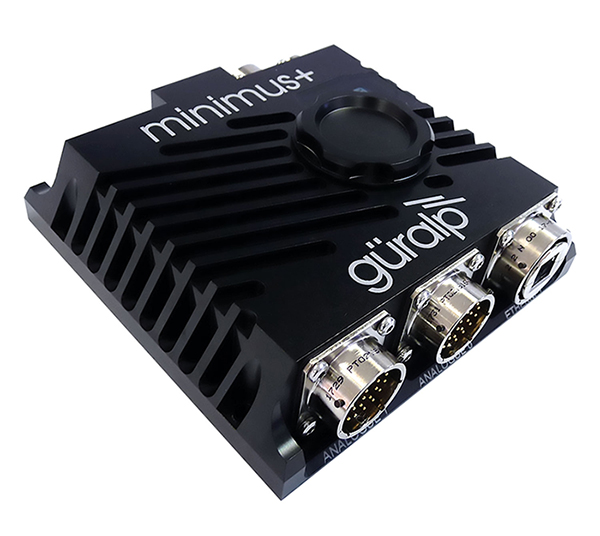
Figure 5: The Minimus+
Deployment
Generally, the seismic monitoring equipment has been placed in seismic vaults built on bedrock. Very Small Aperture Terminal (VSAT) communication was installed to transmit data to the central processing data center in Jakarta where data is processed, and alerts are issued.
Specialists from Indonesia working on this project with Güralp attended Factory Acceptance Testing at Güralp facilities wherein they confirmed their equipment was to desired specifications. They also received training on Discovery software and good installation practice to be technically self-sufficient.
Outcome
The seismic network is now much more effective, with good availability and latency of data System Monitoring InaTEWS (http://202.90.198.40/sismon-wrs/web/slmon). From 2021 until now (2025) 139 stations have been supplied by Güralp.
The project has raised earthquake and tsunami awareness in Indonesia, providing vital information at times of disaster. The early warning system is critical to reduce potential loss of life.
Güralp is proud to have worked with the Indonesian seismic network to improve provision of seismic alerts to the Indonesian people and to the wider Global Tsunami Warning and Mitigation System.

